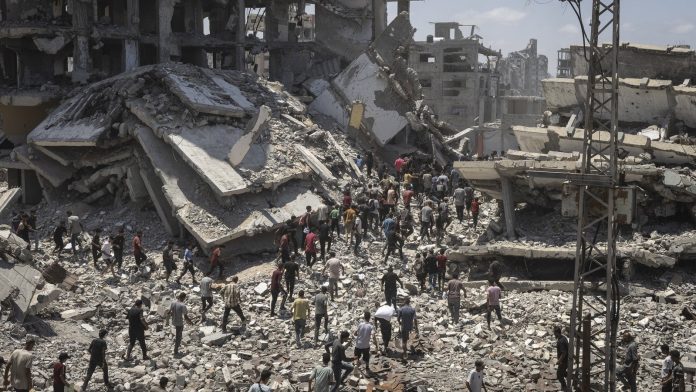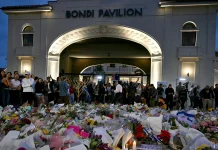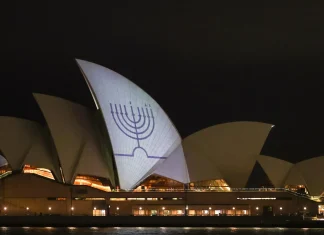The Countdown to Another Gaza Siege: Human Stories Amidst Rising Echoes of War
In the early dawn hours, Gaza City trembled once again beneath a relentless thunder of bombs. The air was thick with smoke and despair, as artillery and airstrikes carved through neighborhoods, shattering homes and hopes alike. For the past day, the Death Toll Clock in Gaza has mercilessly advanced—123 lives claimed just within twenty-four hours, bringing fresh heartbreak to families already battered by months of conflict. This latest chapter in Gaza’s saga of suffering is more than a headline; it’s a mosaic of human tragedy unfolding before a weary world’s eyes.
Netanyahu’s Stark Proposition: “Let Them Leave”
Israeli Prime Minister Benjamin Netanyahu’s recent remarks have stirred fresh waves of controversy. Speaking to Israeli channel i24NEWS, he suggested that Palestinians should “just leave” Gaza should they find themselves caught in the crossfire.
“They’re not being pushed out, they’ll be allowed to exit,” Netanyahu declared, his tone unapologetic. “All those who are concerned for the Palestinians… should open their gates and stop lecturing us.”
His words resounded with a cold calculus, as if stating a grim evacuation plan amid the rubble. But what does such a proposition mean for a region where nearly two million Palestinians live, many with nowhere else to go? How does one ask people to leave their ancestral homes in a land long besieged, fragmented, and under blockade?
Across Gaza, the sounds of shelling and the cries of the wounded drown out political rhetoric. In the battered neighborhoods of Zeitoun and Shejaia, children and elders huddle in basements, their eyes reflecting the flicker of fires that consume what little remains of their homes. The Al-Ahli hospital mourned twelve souls snuffed out in a single airstrike on a residential house, a somber testament to the civilian cost of war.
War’s Shadow Deepens: The Siege of Hunger and Displacement
But it’s not just bombs that are claiming lives. The Hamas-run health ministry soberly reported eight more deaths from starvation and malnutrition in the past 24 hours alone, pushing the total to 235 since the conflict began, including 106 children. The haunting image of a young boy, fragile and desperate, clutching a pot to a food distribution line in Gaza City, captures a different kind of siege—one that strangles from the inside.
“We’re not just fighting an external enemy,” said Dr. Laila Salah, a Gaza-based pediatrician. “We’re losing children to hunger and deprivation while bombs fall overhead. It’s a war on every front.”
Israel, however, challenges these figures and insists it is taking measures to allow aid to flow. Recent announcements noted that nearly 320 trucks bearing food, medical supplies, and fuel have passed through Kerem Shalom and Zikim crossings, with additional aid air-dropped as well. The Israeli military claims daily operational pauses and protected routes for convoys to ease the flow of humanitarian aid.
Yet, for many Gazans, this aid is a trickle in a desert of need. The United Nations and local humanitarian groups continually stress that the supplies fall far short of what is required. Out of those nearly two million souls trapped within Gaza’s borders, the need is staggering. Hospitals are overwhelmed, water is scarce, and electricity flickers unpredictably.
Negotiating Amid Ruins: The Role of Egypt and Hamas’ Dilemma
Meanwhile, in the shadowed corridors of Cairo, a different battlefield emerges. Hamas chief negotiator Khalil Al-Hayya met with Egyptian mediators, valiantly pushing for an end to the bloodshed. “Our people’s suffering transcends politics,” said Hamas official Taher al-Nono. “We seek to stop hands from shedding more blood and to bring aid to the besieged.”
Speculation surrounds these talks. Egyptian security sources disclosed discussions on a possible comprehensive ceasefire — one that would see Hamas relinquish its governance and surrender its weapons. Yet, inside Hamas, opinions differ.
“Laying down arms before the occupation is dismissed is impossible,” an unnamed Hamas official conceded. “We’re open to ideas if the war ends and Israel withdraws.”
It’s a stalemate of wills wrapped in historical grievances and currents of distrust. Hamas, born from resistance and frustration, weighs the survival of its cause against the crushing humanitarian toll. To relinquish control without guarantees might shatter its legitimacy, yet to persist invites endless suffering.
Global Reflections: Voices from the International Sphere
This precarious dance hasn’t gone unnoticed. Twenty-four countries have recently united to decry the “unimaginable levels” of suffering witnessed in Gaza. Calls for unrestricted humanitarian aid echo through diplomatic channels worldwide. Yet, the complexity of this conflict — entangled in years of occupation, political divides, and external influences — resists simple solutions.
For many in the international community, the post-war future of Gaza is equally contentious. Arab states and others advocate for the Palestinian Authority (PA) to govern Gaza, a body with recognized, albeit limited, authority in the West Bank.
Varsen Aghabekian Shahin, the PA’s Foreign Minister, voiced readiness to assume full governance of Gaza, insisting Hamas must disarm and step aside. She also called for an international peacekeeping force and Israeli withdrawal to stabilize the region.
“The people of Gaza deserve peace and effective governance,” she told reporters, “but Hamas’ role must end.”
Hamas, in turn, has expressed willingness to resign governance of Gaza in favor of a technocratic, non-partisan administration agreed upon by all Palestinians—should the war cease. Israel remains skeptical.
A Human Heartbeat Beneath Headlines and Geopolitics
Behind the barrage of political maneuvers and military operations, individual lives pulse with hopes, grief, and resilience. Consider the story of Fatima, a mother of four from Shejaia, who whispered as her home crumbled around her: “When the next bomb falls, I don’t know if we will all be here. But my children must see a world beyond this war. Must they—to simply leave the land where their grandparents lived?”
What does it mean to survive a war that tightens like a cruel noose every passing day? And for those who speak of peace, how do you sow seeds in a land scarred by decades of conflict, blockade, and mutual distrust?
These questions defy easy answers, yet they urge us to listen—to see Gaza not as a flashpoint or a political chessboard but as a community of human beings caught in a harrowing crucible.
What Lies Ahead?
As the world watches, grappling with the unbearable statistics and haunting images, the coming weeks may usher in an intensified Israeli military push into Gaza City—a move officials say could unfold in October. For the residents, it represents another chapter of displacement, destruction, and uncertainty.
Will the global community seize this moment to transform outrage into action? Can diplomacy, humanitarian aid, and courageous leadership converge to alleviate the suffering?
Or will Gaza’s story be yet another testament to the tragic human cost of unresolved conflict?
In this unfolding reality, every number reflects a shattered family, every ceasefire proposal echoes faint hopes, and every act of kindness becomes a small victory for humanity.
Dear reader, as you close this window and step back into your day, pause for a moment. Imagine what life in Gaza feels like now. What responsibility do you feel as a global citizen?
History is watching—and so are we all.










